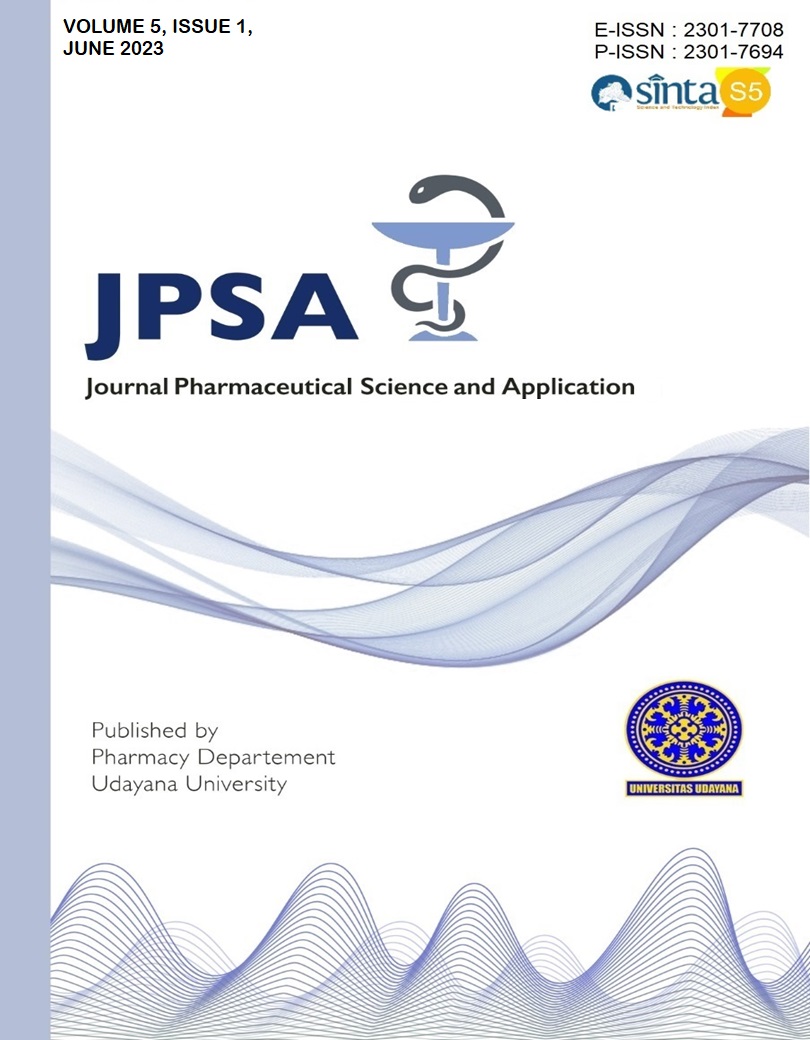IN SILICO TOXICITY OF ANTHOCYANIN COMPOUNDS (CYANIDIN AND PEONIDIN)
Abstract
Backgrounds: Cyanidin and peonidin, anthocyanin compounds, have many in silico, in vitro, and in vivo activities, including antioxidant, anticancer, antihyperlipidemic, and antidiabetic. Toxicity testing is carried out to determine the potential hazard that may be produced by the test compound. Objective: This study was aimed to determine the in silico toxicity of anthocyanins (cyanidin and peonidin) using Toxtree v3.1.0 software. Methods: In silico toxicity testing was carried out using 2D structures of cyanidin and peonidin with Cramer rules, Verhaar scheme, Benigni/Bossa rulebase, Kroes TTC decision tree, Eye Irritation/Corrosion and Skin Irritation/Corrosion parameters. Data analysis on the results of the tested toxicity parameters was carried out descriptively. Results: The results showed that the two compounds have the same category for the toxicity parameters of Cramer Rules (class III), Kroes TTC Decision Tree (substance would not be expected to be safety concern), Benigni/Bossa Rulebase (Negatif for genotoxic and nongenotoxic carcinogenicity), Eye Irritation/Corrosion and Skin Irritation/Corrosion (not irritating or corrosive). Different results are shown in the parameters of the Verhaar Scheme, where cyanidin is included in class 5 (cannot be classified based on this parameter), while peonidin is included in class 1 (narcosis or basic toxicity). Conclusion: Based on in silico toxicity, cyanidin and peonidin have a chemical structure that has the potential for toxicity, but these compounds are neither potentially genotoxic nor non-genotoxic carcinogenicity, and are not potentially toxic to the skin and eyes. The toxicity mechanism of cyanidin cannot be classified based on the test parameters while peonidin is narcosis or basic toxicity.
Keywords: Anthocyanin; Cyanidin; Peonidin; Toxicity; In Silico
Downloads

This work is licensed under a Creative Commons Attribution 4.0 International License.
Authors who publish with this journal agree to the following terms:
Authors retain copyright and grant the journal right of first publication with the work simultaneously licensed under a Creative Commons Attribution License that allows others to share the work with an acknowledgment of the work's authorship and initial publication in this journal.
Authors are able to enter into separate, additional contractual arrangements for the non-exclusive distribution of the journal's published version of the work (e.g., post it to an institutional repository or publish it in a book), with an acknowledgment of its initial publication in this journal.
Authors are permitted and encouraged to post their work online (e.g., in institutional repositories or on their website) prior to and during the submission process, as it can lead to productive exchanges, as well as earlier and greater citation of published work. (See The Effect of Open Access).

This work is licensed under a Creative Commons Attribution 4.0 International License.


 HOME
HOME
















